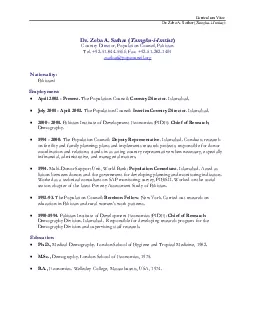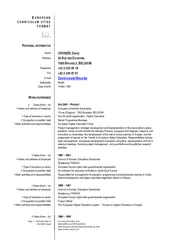PDF-Curriculum Vitae
Author : christina | Published Date : 2021-08-19
Dr Zeba A Sathar TamghaiImtiazDr ZebaA Sathar TamghaiImtiazCountry Director Population Council PakistanTel 92518445566 Fax 92512821401zsatharpopcouncilorgNationalityPakistaniEmploymentApril
Presentation Embed Code
Download Presentation
Download Presentation The PPT/PDF document "Curriculum Vitae" is the property of its rightful owner. Permission is granted to download and print the materials on this website for personal, non-commercial use only, and to display it on your personal computer provided you do not modify the materials and that you retain all copyright notices contained in the materials. By downloading content from our website, you accept the terms of this agreement.
Curriculum Vitae: Transcript
Download Rules Of Document
"Curriculum Vitae"The content belongs to its owner. You may download and print it for personal use, without modification, and keep all copyright notices. By downloading, you agree to these terms.
Related Documents














